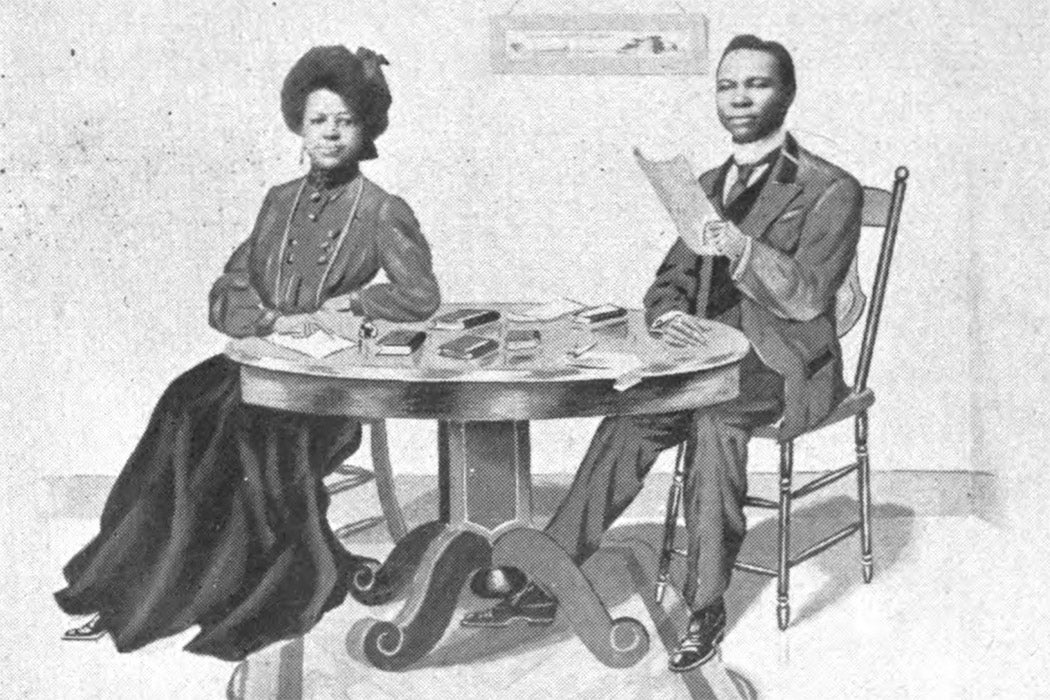In a 1964 interview with Ebony magazine, white journalist John Howard Griffin said he was probably the cause of Mansfield, Texas, becoming the “effigy burning capital of the world.” Three years earlier, Griffin’s book, Black Like Me, had been published by Houghton Mifflin. It recounted his experiment of using a medication to darken his skin, which allowed him to move through the South as a Black man, carrying all of the weight that came with that transformation. As researcher Kathryn Stallard writes, Black Like Me “detailed the discrimination and hardship [Griffin] endured as he traveled on buses, hitchhiked, and struggled to find food and shelter.” The resulting furor after the book was published was harsh as well.
“After his book’s publication, Griffith [sic] was hanged in effigy, had a cross burned in front of his house, and eventually temporarily left the country,” Stallard writes.
Though Black Like Me may be the best known narrative of this sort of racial masquerade, Griffin wasn’t the first—nor the last—to examine these issues. As Stallard explains, a 1905 book called Anthropology Applied to the American White Man and Negro by Black author Robert Gilbert Wells also explored the Black experience of America, though Wells used fiction to make his statement.
That statement began its life as a short book—just ninety-eight pages long—called Anthropology Applied to the Negro. Wells’s work, both in the book and on the lecture circuit, focused on phrenology, physiology, and anthropology, and, as he wrote in the book’s preface, “how man is formed and changed in body and mind by inherited peculiarities and accidental circumstances.”
Wells built on his first book to create Anthropology Applied to the American White Man and Negro, which would fall in the category of speculative fiction. In this longer work, he discussed Black history, lynching, education, and figures such as Booker T. Washington and W. E. B. Du Bois. He also used the additional space to explore the idea of a white person becoming Black through the use of “a fluid” that would darken the skin.
A character called Sam, who was familiar with “a realm of science,” was convinced that his friend Mr. Jones was “too polished a gentleman not to become a negro.” On his part, Mr. Jones laments his whiteness, believing that it’s keeping him apart from a Black man who must be his true brother. Drawing on his expertise, Sam uses a “a mineral or a fluid” to change Mr. Jones’s “texture or hue” so that he could “look upon [his] dear brother with that pride, honor, love and glory for both him and God which [he] had in that far off beginning when manhood first blossomed or bloomed into the image of God, our Father.”
Once transformed, however, Mr. Jones finds his life much more difficult. Forgetting he’s changed, he enters white-only spaces, where “he is accosted and thrown out of the white waiting room, the white-only passenger car, and the train dining car.” The point of the whole experiment was to expose the flaws in an unequal system, using fiction as a method. Though Stallard finds no evidence that Griffin ever read Wells’s book, she notes that both men “argue emotionally and forcefully for racial equality and fairness.”
Another journalistic account predated Griffin’s as well. In 1948, journalist Ray Sprigle wrote a series of articles documenting his own attempt at passing: “I Was a Negro in the South for Thirty Days.” Sprigle was working with the NAACP in an effort to expose the treatment of Black people in the South. (Recent scholarship analyzing Sprigle’s work notes his failure to recognize that one needn’t have crossed the Mason-Dixon line to find racism; the North had its own discriminatory history and practices.)
Although we can’t know if any of these attempts were inspired by Wells, we do know that others were inspired by Griffin. In 1969, fellow journalist Grace Halsell published her own account, Soul Sister, which recounted her own experience passing as Black. Like Griffin, her transformation was aided by drugs, with a bit of added sunbathing. Though the books have similar themes, American Studies scholar Martha J. Cutter argues that Halsell’s book had something Griffin’s didn’t: Halsell “presents a multivalent representation of black political engagement while also probing racial formation itself.”
Weekly Newsletter
The difference may be explained by eras—Halsell’s book was written in the midst of “watershed years in which [B]lack political movements became both more prominent and more radicalized,” Cutter writes, giving it the weight of its time. Halsell also experienced the dual oppressions of race and gender, facing racialized sexism and a rape attempt during her experiment. She returned to the racial-passing beat with a book called Bessie Yellowhair (1973), for which she posed as an Indigenous woman.
Both Griffin’s and Halsell’s books sparked a lot of conversation at the time of publication, but both also portray race as something to be donned and removed as needed, a temporary state. As white authors, they would “always possess some degree of white privilege by virtue of always being able to return to whiteness.”
Two Tips for Teaching
Teaching historical texts about passing. Historian Donald Reid offers one approach to bringing texts about passing into the history classroom.







